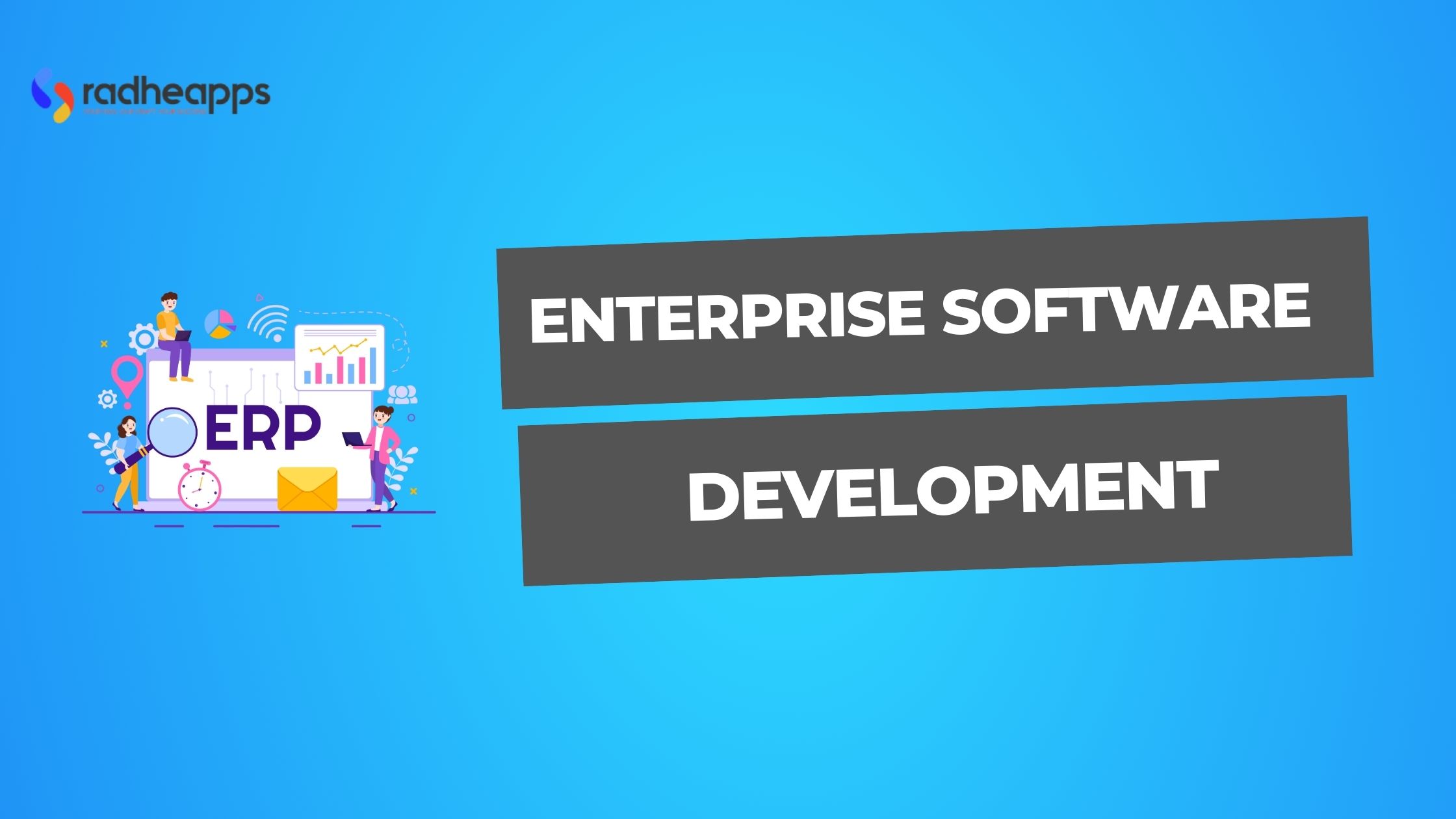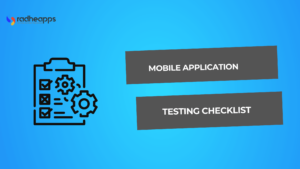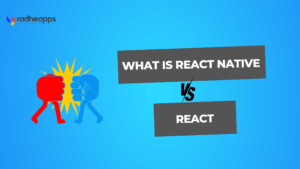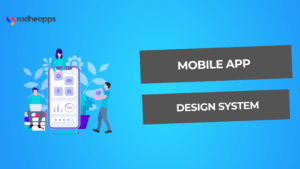Are you looking for custom enterprise software development? Honestly, it’s one of the smartest moves you can make, especially with technology changing constantly.
The enterprise software market? It’s massive and growing fast. Investing in tailored software isn’t just a trend, it’s a solid step toward future-proofing your business.
At RadheApps, we’re here to bring that vision to life. Our team builds flexible, powerful applications that tackle real business challenges and boost performance. We design every solution around your specific needs so your company can grow without limits.
If you’re ready to start building software that pushes your business forward, let’s chat! Reach out to RadheApps, and we’ll get you moving.
Wondering what the process looks like? Here’s a step-by-step guide that takes you from planning to launching and fine-tuning your software for peak efficiency.
Ready to dive in?
TL;DR – Enterprise Software Development Process
In case you want to read quickly, the process steps are listed below:
- Enterprise Software Development Process
- Compilation of Requirements
- Planning & Coordinating
- UI/UX Design
- Software Development
- Testing & Deployment
- Maintenance & Support
What is Enterprise Software Development?
Enterprise software development involves creating applications that help businesses boost productivity and work more efficiently.
It is not the same as regular software development. This is because it needs specialized capabilities built specifically for corporate, enterprise, or facility workflows.
With enterprise software development, you can create business solutions that are reliable, cost-effective, scalable, integrateable, and maintainable, all of which qualify as enterprise-worthy.
An enterprise software development project can take anywhere between six months and two years to complete.
Enterprise Software Development Process
Enterprise software development is a six-step process that follows a set of clearly defined stages.
It is to guarantee that the final product meets the unique needs, goals, and difficulties of the business.
Compilation of Requirements
The process of compiling, arranging, and recording all of the functional and non-functional requirements for the suggested software is known as requirements gathering.
Research indicates that this stage is crucial as insufficient requirements gathering accounts for 56% of software project failures. (PMI)
Business analysts, solution architects, and others with related expertise can assist in this stage by analyzing the current application portfolio and gathering requirements.
Planning & Coordinating
Alright, so once you’ve got a requirements document in hand, it’s time to jump into software planning. Everyone involved in the project needs to be on the same page from the start, this keeps things smooth and avoids any surprises later on.
This step is where a software development plan comes in. It’s a document that turns those initial ideas and requirements into a clear roadmap for building the software.
UI/UX design
The goal of the UI/UX design phase is to make corporate software easy to use. Developers produce graphic layouts, wireframes, and prototypes that meet customer requirements and standards.
Additionally, the UI/UX design considers branding, usability, and accessibility to provide consumers with an aesthetically pleasing experience.
Software Development
The corporate software development team turns the results of the “requirements” and “design” phases into functional software during this phase.
As outlined in the requirements document, the software will be developed to meet the requirements.
After this part, the most successful projects will maintain constant communication with end users. This is for the guarantee that the final product closely complies with the initial specifications.
Testing & Deployment
The software is put through several tests after development to ensure that it is reliable, efficient, and performs well. Various forms of testing, including system, unit, integration, and user acceptance testing (UAT), are also included.
It is the stage where the community is given access to the app. It operates in a real-world environment on a production server, which could be another cloud service or the organization’s server.
Maintenance & Support
After the software product has been properly introduced into the market and all the preceding procedures have been finished, it needs to be continuously updated.
The goal is to quickly resolve any issues and get the systems back up and running as soon as possible. This is done by using the latest operating system updates and third-party software to ensure everything is working smoothly.
How to Choose an Enterprise Software Development Company
With so many options available, the choice of selecting the right enterprise software development can come off as an overwhelming task.
At RadheApps, top Android and iOS developers team up to create standout mobile solutions for brands and companies around the world. They bring your idea to life, keeping quality front and center.
Here are 5 tips that can help you choose the best software development company:
Industry Experience
Seek out a business software development firm that has a track record of success in your particular sector. To provide a solution that genuinely satisfies your objectives, the organization should be aware of the specific difficulties and demands faced by your industry.
Options for Customization
Try to choose a company that offers flexible ERP solutions. This implies that they can modify the program to perfectly suit your company’s operations. The flexibility to customize guarantees that the software will work flawlessly with your operations, regardless of your industry.
Scalability
Select an ERP program that can expand with your company. Your software should be able to accommodate growing user counts, data quantities, and complexity as you grow without needing a total redesign.
Cost-effectiveness
Pay attention to the value proposition rather than the initial expense, even though the budget is crucial. Take into account elements like the functionality provided, the level of support, and the possible return on investment.
Data Security Measures
To safeguard your private company data, make sure the enterprise software development company places a high priority on strong security measures. These precautions include access limits, encryption, frequent security updates, etc.
Custom Enterprise Software Development vs. Off-the-Shelf Solutions
Custom software is created based on the needs of the user, whereas off-the-shelf software is ready-made software that can be utilized right away.
You may occasionally find yourself in a challenging position while selecting the best one for your company. To solve this dilemma, here’s a quick breakdown :
| Factors | Custom enterprise software | Off-the-shelf software |
| Purpose | Custom software is created to address specific challenges faced by a given company or person. It is made especially for a particular situation and, when constructed properly, offers the ideal answer to your issue. | Off-the-shelf software, on the other hand, has a pre-existing foundation and standard architecture, which makes it suitable for a broad spectrum of users. And there is a possibility that it will not meet your specific needs. |
| Practicality | When it comes to custom software, it is created for a single person or business and serves a specific function. | Due to its accessibility, off-the-shelf software has the advantage of being used by a large number of users. Anyone can purchase and utilize it immediately. |
| Compatibility | When custom software is created by the needs of the company, it integrates seamlessly with the way business is conducted. | Compatibility problems with off-the-shelf software mean that your company’s processes, devices, or other systems may not work well with the bundled products, rendering them either completely dysfunctional or extremely inefficient. |
| Customization and Control | Custom software gives consumers total control over the setup and subsequent evolution of features and processes so that they can design the perfect solution for their most complex business needs. | Off-the-shelf solutions, on the other hand, choose to keep control in the hands of the vendors. |
| Competitive Edge | The custom software gives you a competitive edge over your rivals. When your software is well-designed, you’ll find that you outperform your competitors because they lack a personalized answer. | By using off-the-shelf software, you are selecting a solution that your competitors can also use, and your creative ideas are accessible for easy duplication. |
Key Enterprise Software Development Tools for Large-Scale Projects
The selection of appropriate tools is essential for large-scale business software development projects to guarantee productivity, teamwork, and project success.
Here are some of the major Enterprise Software Development tools listed as follows:
GitHub
GitHub is the leading platform for collaboration and version control. Key features include Git repository hosting, pull requests, code review tools, issue tracking, and GitHub Actions for continuous integration and delivery. GitHub is best suited for version control and open-source collaboration.
ClickUp
To replace several tools with a single, adaptable solution, ClickUp markets itself as the all-in-one productivity platform. It excels at task management and team collaboration and was created to assist teams in managing projects, tasks, and documents in one location.
Bootstrap
A core component of adaptable web design, Bootstrap enables developers to easily create, slick, mobile-first websites.
With its responsive grid architecture, pre-styled UI elements, adjustable variables, rich JavaScript plugins, and integrated icons, Bootstrap is best recognized for facilitating quick front-end development.
Jira
Jira has come to represent agile project management and provides a powerful option for teams trying to optimize their processes. Jira is well-known for its enhanced reporting, flexible Scrum and Kanban boards, and robust search features, all of which efficiently facilitate agile project management and issue tracking.
Azure DevOps
A comprehensive solution for managing development projects at the enterprise level is offered by Azure DevOps, formerly known as Visual Studio Team Services.
Because it unifies communication tools, CI/CD, and project tracking, it is perfect for businesses looking to optimize software development from conception to implementation.
Visor
Visor facilitates software development by improving data management and workflow visualization using version control systems and building tools. Its ability to integrate with Jira and other applications is useful for managing tasks, monitoring progress, and guaranteeing project alignment.
Software development teams can benefit from Visor’s collaborative platform, which connects with Jira for project management.
Frequently Asked Questions (FAQs):
What Factors Influence Enterprise Software Development Cost?
The cost of software development can vary a lot based on factors like project scope, tech stack, timeline, and more. To make a reliable estimate, developers or a project manager need a clear understanding of all project requirements.
What is Large-Scale Enterprise Software Development?
Large-scale software development involves building systems that can handle many users at once. These systems manage huge amounts of data and traffic while staying flexible and reliable, even when demand changes.
It’s a multi-step process that focuses on making sure the software can grow, adapt, and perform well under pressure.
How Can Enterprise Software Solutions Support Business Growth?
Enterprise software offers firms several advantages and helps them to grow. Businesses rely on big software solutions to get more done, stay organized, work better as a team, and make smart choices.
Scalable software means they can expand without turning everything upside down, so growth stays smooth and manageable.
Conclusion
A custom workflow simplifies tasks exactly where it matters when you create and launch new corporate software. A customized system captures the workflow, brand identity, and collaborative style of your company.
RadheApps specializes in building enterprise-level software that fits your business’s specific needs. We bring the expertise you can trust to fuel growth, backed by a solid track record of successful projects.
Want a custom, high-performance software solution that can transform your business?
Contact RadheApps today to get started.




